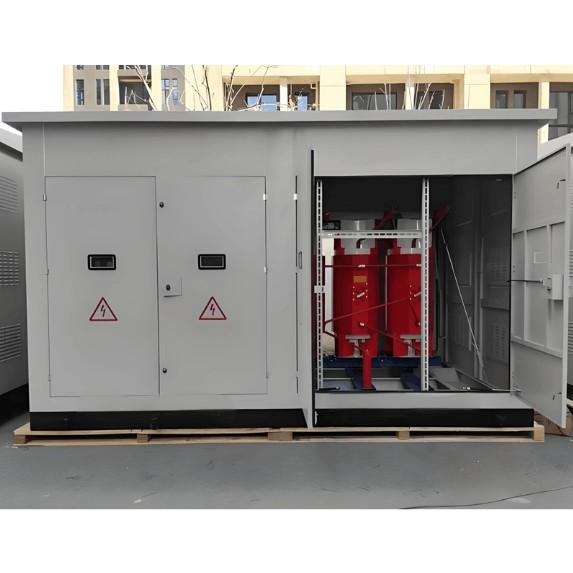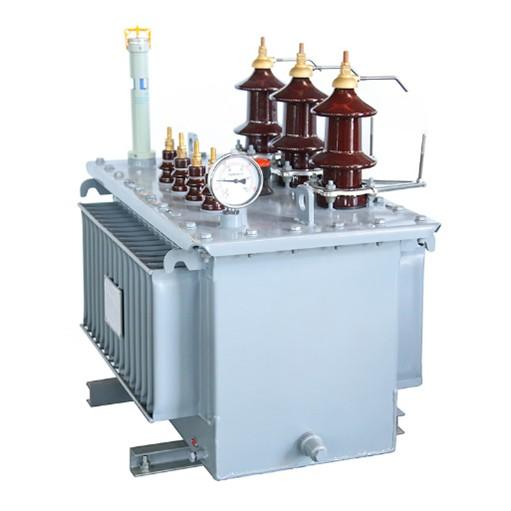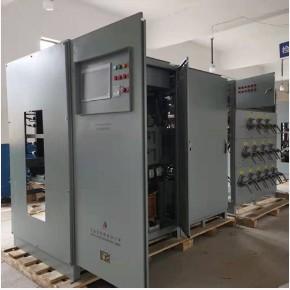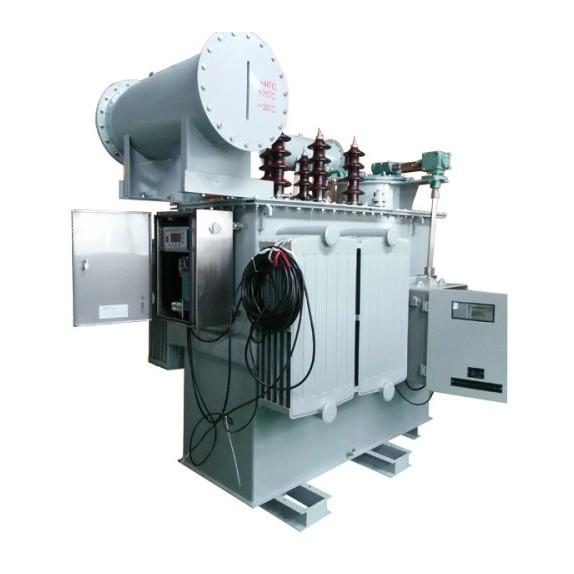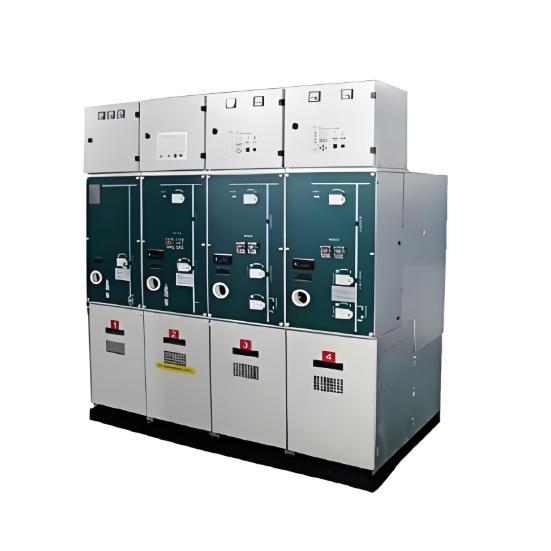
Med den kontinuerlige økonomiske utviklingen og den økende innvirkningen av strøm på folkets liv, spesielt i byområder med høy lasttettle, er strømforsyningens pålitelighet spesielt viktig. Å etablere en distribusjonsnettverk basert hovedsakelig på en ringstruktur kan effektivt forbedre strømforsyningens pålitelighet, sikre at forsyningen er stabil, og minimere effekten av feil og vedlikeholdsavbrudd i distribusjonsekviperingen. Som et nøkkelledd i ringoperasjonsmodus, brukes Ring Main Unit (RMU) vidt i distribusjonsunderstasjoner og kompakte understasjoner i belastningsentre som byboliger, høybygg, store offentlige bygninger og industrielle anlegg, takket være sine fordeler som enkel konstruksjon, kompakt størrelse, lav kostnad, og evnen til å forbedre strømforsyningens parametere, ytelse og sikkerhet.
1. Typer Ring Main Units
I distribusjonssystemer inkluderer utstyr som kan utføre ringfunksjoner hovedsakelig ringtype kabelgrenbokser og RMUs. Ringtype kabelgrenbokser har lavere kostnader og mer fleksible installasjonssteder. De er spesielt fordelaktige i tette byområder der det er vanskelig å få plass til en distribusjonsrom (som er nødvendig for RMUs), noe som viser deres fleksibilitet. Imidlertid, sammenlignet med RMUs, har ringtype grenbokser de største ulemper i form av dårligere sikkerhetsytelse (spesielt angående foranstaltninger mot misshandtering), utilfredsstillende driftsmiljøer, og visse risikoer. Hvis forholdene tillater, anbefaler forfatteren å prioritere bruk av RMUs for ringkonfigurasjoner. RMUs kan bli klassifisert etter type lastskru som blir brukt: luftblås-RMUs, kolven-type RMUs, vakuum RMUs, og SF6 RMUs. Av disse, har luftblås- og kolven-type RMUs blitt stort sett fjernet grunnet dødsfall og lav pålitelighet i deres lastskrue. Vakuum RMUs og SF6 RMUs blir mye brukt i distribusjonssystemer på grunn av deres høye ytelse, pålitelig drift og vedlikehold.
1.1 Vakuum Ring Main Units
År av innenlandsproduksjon og bruk av vakuum sirkuitsbrytere og vakuum skruveutstyr har gjort vakuumteknologi relativt moden i Kina. Innlandsutviklede vakuum RMUs har demonstrert høy ytelse i typetest, men har ikke sett bred bruk. Den hovedgrunnen er underpresterende operasjonseksempler. Designet av operasjonseksempler for vakuumskruber er relativt komplekst, og på grunn av nivået av innenlands råmaterialer, bearbeidningsteknikk og kvalitetskontroll, har kvaliteten på operasjonseksempler produsert av innenlandsprodusenter ikke virkelig oppfylt kravene. Drift og vedlikehold er vanskelige, og hvordan måle vakuumgraden i vakuum RMUs er en stor utfordring i vedlikehold.
1.2 Fordeler og ulemper ved SF6 Ring Main Units
Bruken av SF6 RMUs i distribusjonssystemer er hovedsakelig dominert av importerte produkter. De blir vel mottatt av strømforsyningsavdelinger på grunn av deres fremragende ytelse, pålitelig drift, fullt isolert tett design, og vedlikeholdsfrie fordeler. Typiske SF6 RMUs inkluderer Schneider's RM6, ABB's SafeRing, og Siemens' 8DJ20. Imidlertid, er det også noen ulemper under drift.
1.2.1 Fordeler ved SF6 RMUs:
(1) Høye ytelsesspesifikasjoner: SF6 RMUs har høy driftsfrekvens, kapasiteten til å lage og bryte opp til 100 ganger den nominerte aktive lasten. De har også gode brytekapasiteter og kan tåle høye strømmer.
(2) Enkel vedlikehold: Kabinetts overflatedesign er brukervennlig. Klare kablingsdiagrammer på panellet gir veiledning for drift. Noen produkter noterer endda forhåndsvarsler på kabinetts overflate, noe som ytterligere reduserer forekomsten av operatorfeil. De fleste RMU-produkter er utstyrt med enheter som kan måle levende statusen av hovedkretsen, som gir indikasjon om levende tilstand, og når kombinert med elektromagnetiske låser, forhindrer at håndlettdør lukkes når den er levende, noe som reduserer misshandtering. I tillegg har forsidedøren en transparent akrylobservasjonsvindu som lar en direkte se skrubens åpen/lukket status, noe som er svært praktisk.
(3) Sterk fleksibilitet: Moderne RMUs kan meget fleksibelt møte kravene til ulike distribusjonsnettverkdesigner og kan kombineres fritt etter faktiske forhold. Videre er kablingsforbindelsesmetoder også svært fleksible, som tillater tilpassede forbindelser selv på uregelmessige terrengflater uten å forårsake delvis utslipp.
1.2.2 Ulemper ved SF6 RMUs:
(1) Ubøyelig konfigurasjon: De kan bare velges fra et begrenset antall skjemaer som produsenten tilbyr, noe som gjør det vanskelig å møte ulike brukerspesifikke behov.
(2) Utvidelse er ikke mulig: Etter at skruveutstyret er satt i drift, er utvidelse generelt ikke mulig.
(3) Spesialiserte tilbehør kreves: De krever spesialiserte tilbehør som spesifikke kabellendinger, som kan være kostbare.
(4) Streng installasjonskrav: Hvis installasjonskrav ikke er oppfylt, kan enhetene ikke oppnå sin ønskede ytelse.
På grunn av ubøyelig konfigurasjon av helt tette SF6 RMUs, har bruken av utvidbare halvtette SF6 RMUs i distribusjonsnett økt. Halvtette RMUs har uavhengige gasskompartimenter for hver enhet, noe som gjør dem lett å utvide, installere og bytte ut. For tiden, er ofte brukte RMUs Schneider's SM6, ABB's Uniswitch, og Siemens' 8DH10. Som innlandsprodusenter gradvis mestrer SF6 lastskru-teknologi, er mengden og kvaliteten på innlandsproduserte SF6 RMUs stadig i stigning. Likevel, er markedet for innlands 10kV og 20kV SF6 RMUs fortsatt hovedsakelig dominert av utenlandske firmaer (som Schneider eller ABB).
2. Problemer med SF6 Ring Main Units
2.1 Fuktinnhold i SF6-gass
SF6 RMUs har sjeldent med fuktinnholdstestrapporter. Som utstyrsovervaker, kan strømforsyningsfirmaer ofte ikke måle fuktinnholdet selv. Fuktighetsnivået i SF6-gassen påvirker direkte dens bukkeslukningsytelse og sikker driftsytelse av utstyret. For SF6 RMUs som har vært i drift i flere år, er det en utfordring å vurdere tilstanden av deres bukkeslukningskapasitet.
2.2 SF6-gass lekkasje problemer
SF6 RMUs kan ha tettetegnsporblemer som fører til gasslekasje. Praktisk erfaring viser at selv om importert utstyr generelt har god tettetegnsegenskaper, forekommer det fremdeles lekkasje. Siden de fleste enheter mangler gassovervåkningselement, kan brukerne være ukjente med lekkasje, noe som potensielt skaper skjulte farer. Dette er spesielt bekymringsverdig angående ytelsen (isolering, skruving, etc.) av RMU ved null trykk og dens evne til å motstå interne bukkefeil. Mange av disse produktene bruker manuelle operasjonseksempler, og operatører arbeider nær. En ulykke kan ha alvorlige konsekvenser. For tiden, er inkludering av et trykkindikator blitt et obligatorisk krav, inkludert som et nødvendig tilbehør for halvtette RMUs.
2.3 Mekaniske problemer
I forbindelse med beskyttelse av distribusjonstransformator, er kombinasjonsenheter som bruker lastskru plus sikringer vanlige. Lastskru bryter laststrøm, mens sikring bryter kortslutnings- og overlaststrøm. I Hebei's distribusjonsnett, oppsto hendelser med helt tette RMUs hvor sikringen sprang, men lastskruen klarte ikke å åpne pålitelig, noe som hindret den defekte transformator fra å bli deenergisert og forårsaket alvorlig skade. Årsaken var for lang reise i trip-tråden av operasjonseksemplet styrt for tripp, som hindret slagskraften fra sikringsstrikeren fra å aktivere lastskruens trippmekanisme på en vellykket måte. Dette defekten kan løses ved å justere trip-tråden og stramheten på mutterne. I tillegg, er simulering av sikringsdrift for transformatorforesporingselementer inkludert som et obligatorisk forhåndsdriftstest.
2.4 Materialproblem med likestrømnings skjold
Halvtette RMUs kan vanligvis ikke bruke berørbare kabellendinger. Likestrømnings skjold blir ofte brukt for å løse problemet med utilstrekkelig fase-til-fase avstand ved kabellendingsforbindelsespunkter. Imidlertid er aluminiums likestrømnings skjold sterkt følsomme for fuktige miljøer. Selv når brukt med anti-kondensvarmere, er effektiviteten i fuktige forhold begrenset. I 20kV distribusjonssystemer, har det blitt observert alvorlig korrosjon av disse skjoldene. Overflatesurhet og hvite pulverkorrosionsprodukter forstyrrer elektriske feltuniformitet på skjoldoverflaten, noe som negativt påvirker likestrømnings effekten. På grunn av de små fase-til-fase avstandene rundt skjoldene, kombinert med daglige temperaturvariasjoner, dannes kondens ved bunnen av gaskompartimentet og kan flyte tilbake til skjoldområdet, noe som skaper en utslippsbane. Epoxy-materialene av isoleringsbarrierene ved bunnen av gaskompartimentet kan utsettes for alvorlig elektrisk korrosjon, eventuelt leder til interfasel utslippsbaner og til slutt overflateisolering nedbrytning. Denne hele utslippsprosessen er gradvis. For å løse kondensproblemet, kan strømforsyningsfirmaer modifisere RMUs likestrømnings skjold, ved å bytte til silikonkautsjuk isolerende kabellendingsende. Disse endene bruker intern semileductorlag, som fortsatt kan gi en likestrømnings effekt. Den forbedrede RMU-designen har bestått kondens- og standhaftig spenningsprøver og er planlagt for prøvedrift i distribusjonsnett.
3. Anbefalinger for valg av SF6 RMUs
(1) Velg utvidbare RMUs: Deres fleksible konfigurasjon, enkel installasjon, og letthet i utvidelse representerer fremtidens retning for bruk av SF6 RMUs.
(2) Ta hensyn til vedlikehold: Idealiter burde SF6 lastskru være utstyrt med en enhet for å overvåke SF6-trykk. Ellers, burde det ha bestått en null-trykk skruvetest.
(3) Ta hensyn til klima og lokasjon: Velg produkter som har bestått kondensprøver. For små ringmain-enheter, som terminalenheter, der fremtidig utvidelse ikke er planlagt, kan bruk av helt tette RMUs betydelig redusere effekten av kondens på utstyret.
Oppsummering
År av driftspraksis viser at blant ulike typer RMUs, tilbyr SF6 RMUs høy ytelse, pålitelighet, kompakt størrelse, lav romfordeling, og minimalt vedlikehold, noe som fører til deres mest utbredte bruk. Ved å ta hensyn til ulike faktorer som vedlikeholdsomkostninger, sekundære investeringer, og pålitelighet, anbefales det, der forhold tillater, å prioritere bruk av SF6 RMUs i distribusjonsnettrenovering og -oppbygging. Under planlegging og oppbygging, bør det gis tilstrekkelig hensyn til integrering av automatiseringselementer og vedtak av sikre, pålitelige, og avanserte utstyr for å forbedre distribusjonsnivå, gjøre distribusjonsnett mer pålitelig og trygt.











